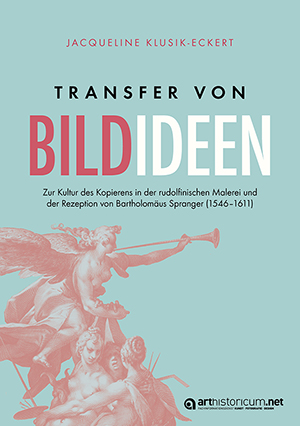
How to Cite
Klusik-Eckert, Jacqueline: Transfer von Bildideen: Zur Kultur des Kopierens in der rudolfinischen Malerei und der Rezeption von Bartholomäus Spranger (1546–1611), Heidelberg: arthistoricum.net-ART-Books, 2023. https://doi.org/10.11588/arthistoricum.1137
License

This work is licensed under a Creative Commons Attribution-ShareAlike 4.0 International License.
Identifiers
ISBN 978-3-98501-133-9 (PDF)
ISBN 978-3-98501-134-6 (Hardcover)
Published
03/29/2023
Transfer von Bildideen
Zur Kultur des Kopierens in der rudolfinischen Malerei und der Rezeption von Bartholomäus Spranger (1546–1611)
The book focuses on the reception of Rudolfine painting, primarily Bartholomäus Spranger's (1546–1611). With the help of a new method, inspired by Warburg's Bildreihen, anonymous copies become new sources. Influenced by aesthetics around 1600, above all the aemulatio principle as an agonal concept peculiar to art, these art objects can not be neglected as mere reproductions. Copies with transfer of genre are to be understood as creative, partly imaginative translations. If one appreciates the copies as original objects with their own historiografy, they become evidence of an early modern culture of innovative copying.
Chapters
Table of Contents
Pages
PDF






